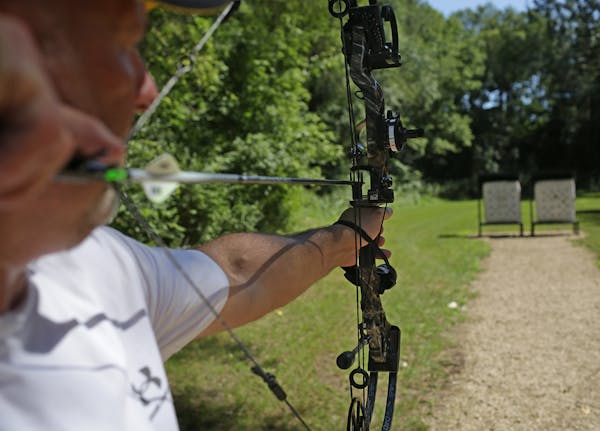Hunters discouraged by an overall downward trend in Minnesota pheasant numbers may want to return to the field this year to take advantage of an unmistakable rise in the state's ringneck population.
According to the annual pheasant survey released Tuesday by the Department of Natural Resources (DNR), the state index is up 29 percent from last year, which was not a bad year by recent Minnesota standards.
All regions posted increased counts for 2016 with the exception of the southeast corner of the state, which was hit by late-season snow and a wet spring.
In all other regions, pheasants multiplied aplenty thanks to a second consecutive mild winter followed by a hatch-friendly spring.
There was an abundance of rain this spring throughout the pheasant range — a detriment to nesting — but the rains were coupled with warmth, which was positive, said Nicole Davros, DNR wildlife research scientist.
"All of us were kind of holding our breath," Davros said. "But lots of hens survived the winter and made it through to a good nesting season. … It should be a good fall for hunters."
This year's statewide pheasant index average was 52 birds counted per 100 miles of roadside driven. According to the DNR, the highest roadside counts were in the southwest, east-central and south-central regions, where observers reported 53 to 96 birds per 100 miles.
In the south-central region, the index increased 70 percent over 2015. In the popular southwest, the index was up 25 percent, the DNR reported. In addition, there was an overall increase of 39 percent in the brood index.
Participation in Minnesota's pheasant hunt has been in serious long-term decline due to habitat losses and a related crash in pheasant population. Last year, 63,300 licensed hunters harvested 243,000 roosters in a season that produced pleasant increases in both categories.
Davros said the DNR isn't making predictions for the 2016 season, which opens Oct. 15, but there's hope for even more participation and success.
"If weather plays along we could have another increased harvest," Davros said.
Historical perspective is important. The DNR's 2016 pheasant index is still 14 percent below the 10-year average and 48-percent below the long-term average. That's due to a historic loss of grassland, mostly to farming but some to housing and business development.
Looking forward, Davros said, the habitat situation will worsen due to projected losses of pheasant lands now enrolled in the federal Conservation Reserve Program (CRP). For 30 years, CRP has paid farmers to convert cropland to grassland. But Minnesota stands to lose more than a third of its 1.08 million CRP acres by the 2018 pheasant season.
Davros said state-funded land set-asides have offset some habitat losses. But new conservation efforts involving private landowners are crucial to minimizing pheasant habitat loss, she said.
Tony Kennedy • 612-673-4213
Legendary rugby league star Wally Lewis appeals for concussion and CTE awareness support
LeBron James rants at NBA's replay center for calls, Lakers lose on buzzer-beater, trail Denver 2-0
Hyman gets 1st playoff hat trick, McDavid has 5 assists as Oilers beat Kings 7-4 in Game 1

